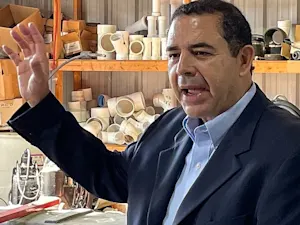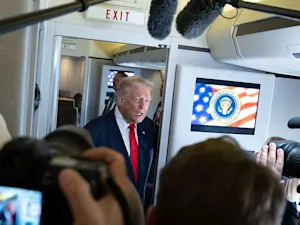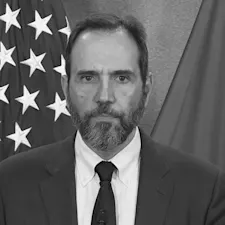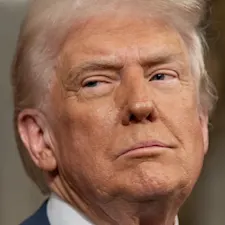
Trump's 'Totally Obliterated' Claim Crumbles Under Leaked Intel
Donald Trump speaking with attendees at The People's Convention in Detroit, Michigan. Photo by Gage Skidmore under CC BY-SA 2.0.
President Donald Trump's bold declaration that the recent U.S. airstrikes on Iranian nuclear facilities had obliterated the sites is now facing a harsh reality check. Leaked intelligence intercepted from Iranian officials reveals a far less devastating picture, suggesting that the damage inflicted may be less severe than Trump's triumphant claims. This discrepancy between the president's fiery rhetoric and the emerging evidence raises serious questions about the administration's grasp of the situation and the potential fallout for U.S. credibility on the global stage.
The Bombing and Trump's Grand Claim
On June 21, 2025, the United States launched a series of airstrikes targeting three key Iranian nuclear sites: Fordow, Natanz, and Isfahan. Hours after the attacks, President Trump addressed the nation from the White House, flanked by Vice President JD Vance, Secretary of State Marco Rubio, and Defense Secretary Pete Hegseth. Trump proclaimed the strikes a "spectacular military success," insisting that Iran's nuclear enrichment facilities had been "completely and totally obliterated," as reported by PolitiFact.
The president's confident assertion was echoed in posts on Truth Social, where he doubled down on the claim, dismissing any contradictory reports as "Fake News" and insisting the sites were "totally destroyed."
Yet, even within his own administration, more cautious voices emerged. Joint Chief of Staff Chairman Gen. Dan Caine shared a description of the damage, saying the "final battle damage will take some time, but initial battle damage assessments indicate that all three sites sustained extremely severe damage and destruction."
Leaked Intelligence Paints a Different Picture
The real bombshell came with the leak of intercepted communications among Iranian officials, captured by U.S. intelligence. In a private conversation, Iranian government representatives expressed surprise that the strikes were "less devastating than expected," questioning why the damage was not more extensive despite the use of powerful bunker-buster bombs and Tomahawk missiles, as reported by the Daily Beast.
This leaked audio, first reported by The Washington Post and later confirmed by Rolling Stone, directly contradicts Trump's narrative of total obliteration. The Iranian officials speculated about the limited impact of the strikes, suggesting that key infrastructure remained intact beneath the rubble.
The White House did not deny the existence of the intercepted call but condemned the leak and accused the media of publishing out-of-context information. Press Secretary Karoline Leavitt dismissed the Iranian officials' knowledge of the damage and said, "It's shameful that the Washington Post is helping people commit felonies by publishing out-of-context leaks," as reported by the Daily Beast. She continued, "The notion that unnamed Iranian officials know what happened under hundreds of feet of rubble is nonsense. Their nuclear weapons program is over."
Experts Weigh In: Premature and Overblown
Military analysts and nuclear experts have largely agreed that Trump's sweeping claim was premature. Assessing bomb damage, especially to underground facilities like Fordow, is a complex and time-consuming process. Satellite imagery can reveal aboveground destruction, but the true extent of damage to subterranean tunnels and enrichment machinery remains difficult to verify immediately after an attack.
Mark F. Cancian, a senior adviser at the Center for Strategic and International Studies, noted that it would be "difficult to confidently make such a statement right after the raid," as reported by PolitiFact.
The head of the International Atomic Energy Agency, which monitors Iran's nuclear program, Rafael Mariano Grossi, expressed skepticism about the extent of the damage, suggesting that Iran likely moved enriched uranium stockpiles before the strikes. He said, "Iran has made no secret that they have protected this material," according to PolitiFact.
This view is supported by nuclear nonproliferation expert Hans M. Kristensen, who expects Iran to have relocated fissile material to safer locations ahead of the attack.
The Fallout: Credibility and Diplomatic Consequences
The gap between Trump's confident declarations and the intelligence leaks exposes a troubling disconnect that could allegedly undermine U.S. credibility. When a president proclaims a decisive victory only to have that claim undercut by classified information, it fuels skepticism both at home and abroad.
For allies and adversaries alike, the conflicting narratives raise questions about the reliability of U.S. intelligence assessments and the administration’s transparency. If Iran's nuclear program remains operational beneath the surface, the strikes may have only delayed rather than ended Tehran's ambitions.
This uncertainty complicates future diplomatic efforts. If the U.S. is perceived as exaggerating its military successes, it risks weakening its negotiating position in any talks aimed at curbing Iran's nuclear program. The leaks themselves highlight ongoing challenges in controlling sensitive information, which can further erode trust.
A Battle Between Words and Reality
As the dust settles over Iran's nuclear sites, one thing is clear: words can be more explosive than bombs. President Trump's fiery proclamations may have fired up his base, but the leaked intelligence paints a murkier picture — one that could haunt America's credibility far longer than any crater left behind. In a world where perception shapes power, the administration now faces a sobering truth: declaring victory doesn't guarantee one.
References: Second Intelligence Leak Obliterates Trump's Iran Claim | Are Iranian nuclear sites 'obliterated,' as Donald Trump said? Too soon to know, experts say | Leaked Iran Call Further Shreds Trump's Narrative: Report























